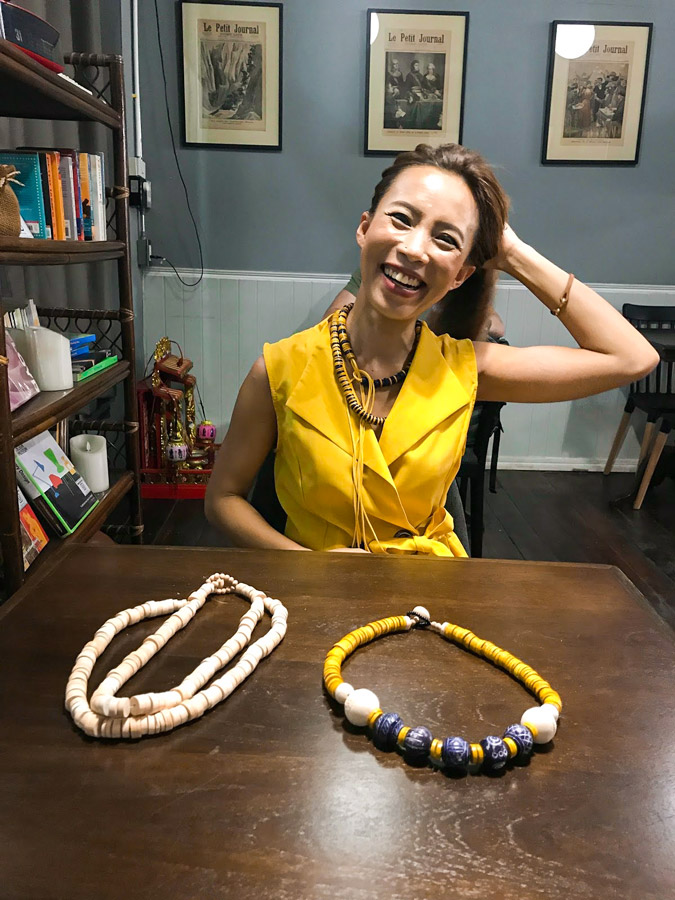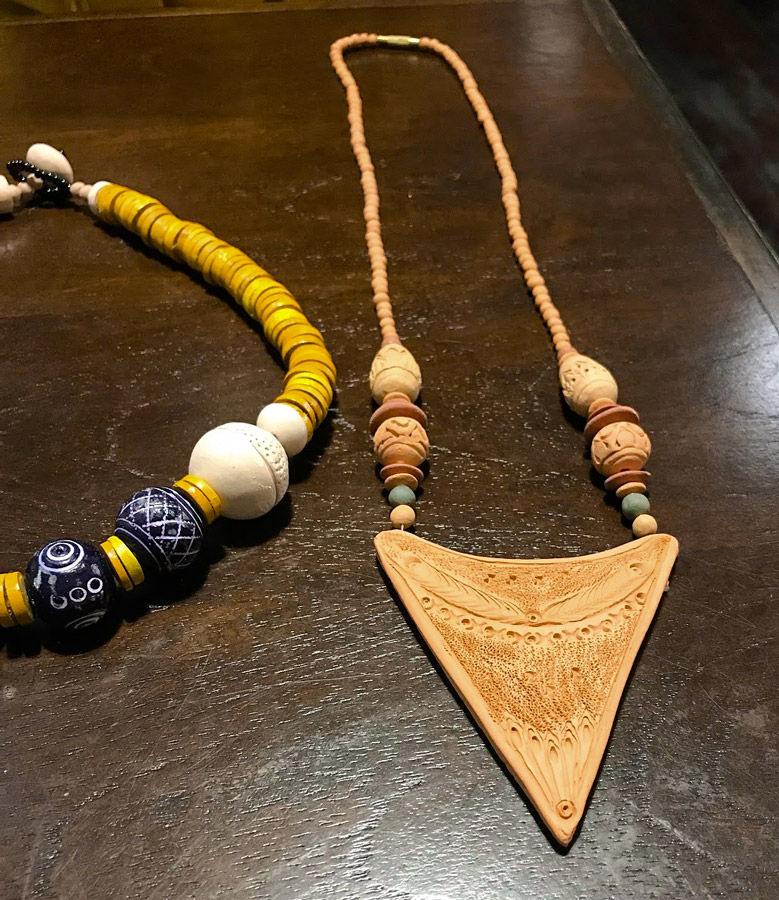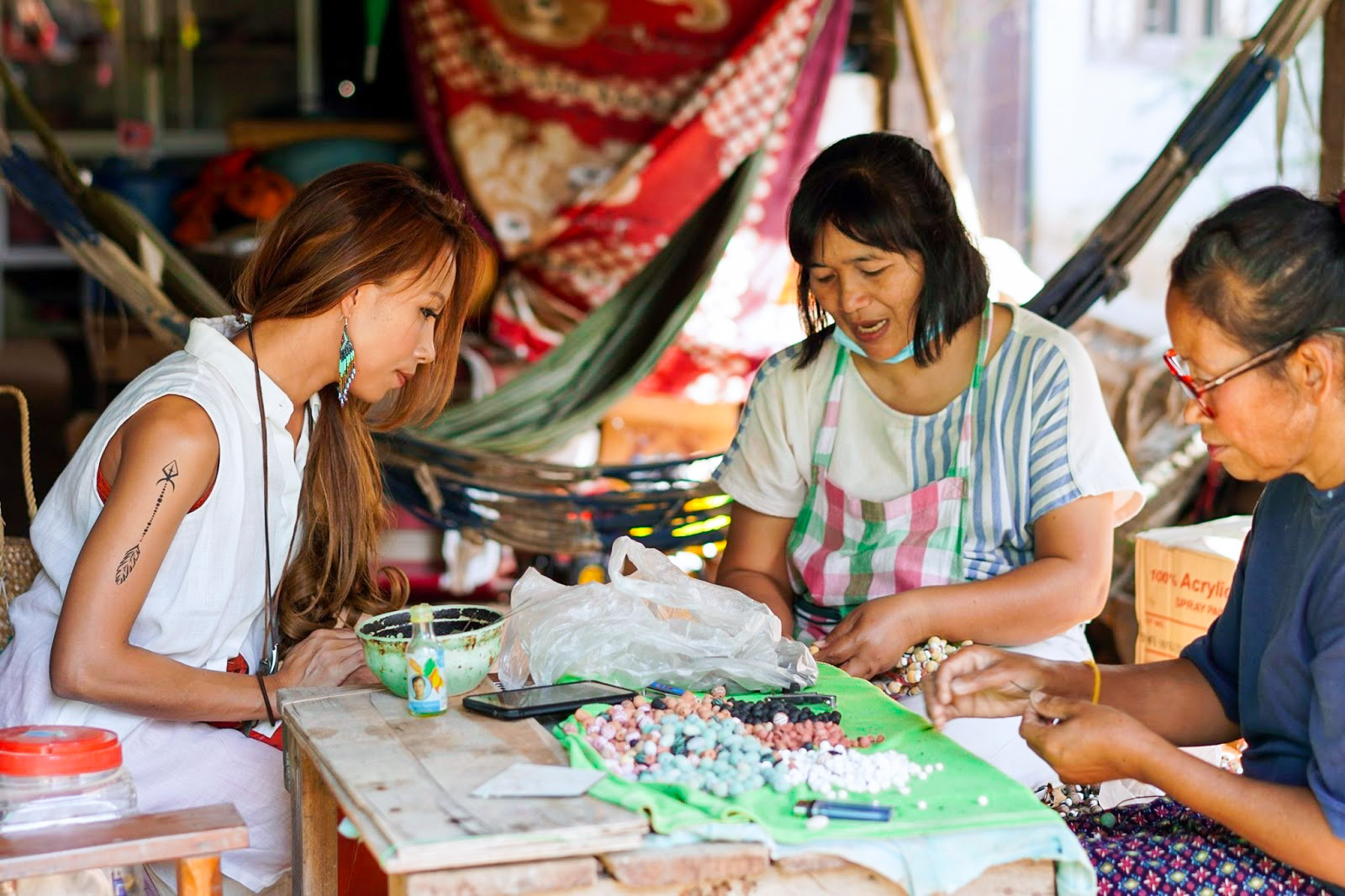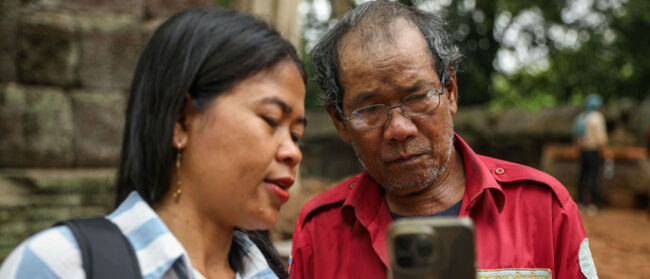As Covid-19 rips through Thailand’s economy, the women of Dan Kwien in Northeastern Thailand, with the help of a Thai film director, are combining their centuries old skill with modern e-commerce to sell handmade clay jewellery and save livelihoods.
Northeastern Thailand, known as the Isaan region, is Thailand’s poorest region and home to 33% of Thailand’s population – 21.95 million people. More than one third of those people, 7.8 million, earn a living from agriculture.
But film director Naruemon “Ploy” Chaingam, who herself is from Isaan, founded clay jewellery brand Four Elements Thailand in December last year, just as the pandemic was emerging. She aimed for the brand to promote the creativity and colour of her home region, while raising the standard of living for the women who live there.
Ploy has a passion for telling stories about the complex issues facing Southeast Asia. She has directed documentaries including as Thailand’s Master Forger, about a passport forger imprisoned in Thailand. The film won the 2016 Luang Prabang Film Festival Pitching Award. Her documentary Survival of Thai Rice won the 2015 Festival of Photos Award for Reportage and Documentary Films on the Peoples in ASEAN Community.
She told the Globe about her inspiration to start the brand, and its progress so far.
“I tell myself I’m a storyteller, so everything that has a story, it kind of impresses me. And I went to stop at my cameraman’s village, he’s from Dan Kwien,” said Ploy. “I was there for a couple hours only, and I saw his cousins doing these necklaces.”


Ploy [pictured] hopes to make Dan Kwien once again known for its artistic talent through Four Elements. Photo: Tara Abhasakun
The story of the Isaan is that men move out of the Isaan to the big cities for work, so the only people left in the Isaan are women and kids
Dan Kwien is known for its pottery, and when Ploy saw it with her own eyes, she knew she wanted to take it further. “I really started to like it and then when I learned more about their stories, I wanted to do my own brand and tell this story to the world,” she said.
Ploy said that she both wants to work with the women and help support their livelihoods.
“The story of the Isaan is that men move out of the Isaan to the big cities for work, so the only people left in the Isaan are women and kids – so the women have to support their families,” said Ploy. “This is the same situation as me, because I have to provide for my family because I’m a single mum. So this is sort of a ‘passion project.’”
In the past, merchants stopping in Dan Kwien on the way to other cities bought pottery there. “It became a place where all the wagons stopped,” Ploy explained.
The Dan Kwien Municipality Pottery office chief Narong Pliewkratoke said that the greatest development for local pottery production happened in 1967, when an academic in Nakhorn Ratchasima introduced technology to modernise the region’s pottery process.
Then, 37 years ago, Ploy said, an artist named Saman Saengthorn came up with the idea of clay jewellery while working at a pottery shop in Dan Kwien in order to pay for his tuition. Saman’s initiative would prove the beginning of a movement, with the town eventually becoming renowned for its clay jewellery.
Today, however, it is losing this tradition due to the difficulty of making high-quality jewellery fast enough to make it profitable, with a cyclical struggle ensuing pitting quality against speed.
But Ploy hopes to make Dan Kwien once again known for its artistic talent through Four Elements. Pavinee Boonnet, Ploy’s colleague, said that she saw renewed vigour within the team of 10 women making jewellery for the brand.
“It brings new vision and perspective for them,” Pavinee said. “They have increased their production quality and they are very happy about it. It brings joy to be able to spend time on the process and be paid higher for a piece, rather than producing massive amounts of the same things.”
Pavinee, whose father was famous in Dan Kwien for his pottery, said that Four Elements has created exciting new challenges for her team.
“They have to make the jewellery look more delicate and industrial,” she said. “They have to think about how to make it look more luxurious than before, while keeping the pattern, size, and colour the same as the traditional designs. They have to experiment with their production and learn that actually there are many other creative ways that they can [make jewellery].”
During the Covid-19 outbreak, ecommerce has played a large role in helping Four Elements to remain in business, and Ploy has since been teaching the staff how to sell items online with necklaces sold for around 600 to 700 baht ($20 to $23) on Etsy.
The company also faces challenges in ensuring it manages to satisfy its now diverse taste of clients, which are increasingly drawn from both Thailand and abroad. Some clients, Ploy says, want more modern-style jewellery, while others want more traditional designs.
The staff of Four Elements continues to learn how to navigate these challenges as the brand expands in clientele. Despite The difficulties of Covid-19, Ploy and her colleagues are highlighting the creativity and potential of Isaan women, a demographic whose potential has been arguably overlooked.
In doing so, they have the opportunity to earn a livelihood during these testing times and promote their culture.


